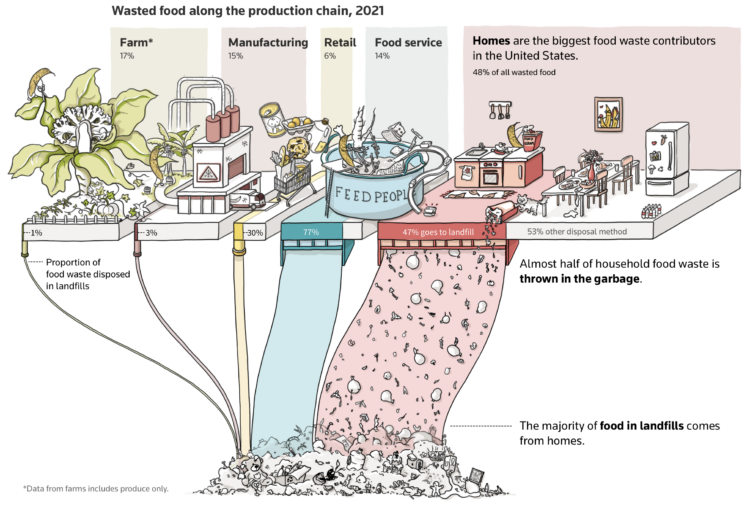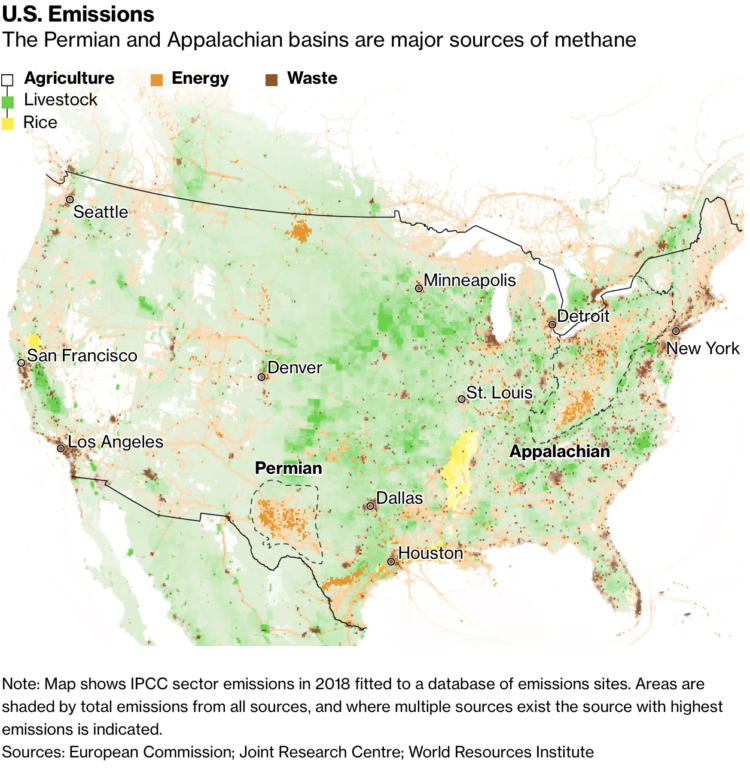Almost half of wasted food comes from homes, and almost half of that goes to landfills. The rotting food then produces methane. For Reuters, Ally J. Levine and Daisy Chung illustrate why that’s an issue and why we should minimize the amount of food we throw away:
Methane produced by food decomposing in landfills makes up 1.6% of all human-made Greenhouse Gas emissions. While that may not sound like much, it’s a large percentage for such a specific pollutant. When scientists look at hyper-specific categories, Karl says, anything over 1% is significant.
“Any action that can prevent food waste from sitting in untreated piles will directly lead to climate impacts being reduced.”
I appreciate the illustrations that make the data less abstract, which have become standard from Reuters Graphics.


